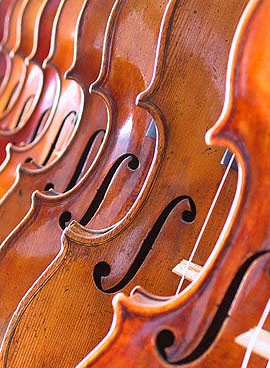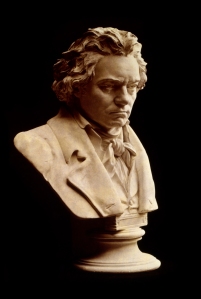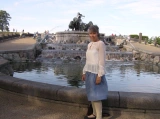Coursera on String Quartets
I have just completed a 7-week free music course on “The World of String Quartets” at the online course “Coursera”. Only when I began to take notes did I pass the questions from each week’s program.
Coursera offers courses from many different universities in all subjects. This one was for the Curtis Institute of Music in Philadelphia in the U.S.A.

Azuri string quartet photo ithaca.com
I really got to appreciate the two teachers and the young female string quartet who gave the many excerpts of music to illustrate the teaching. Arnold Steinhart was the first violinist in a famous string quartet the Guarneri String Quartet. They performed together for 45 years. In the course, Arnold Steinhart explains how it is to work together on a complicated piece of music. They tried different ways and decided what worked best afterwards. Sometimes they were moved entirely by the music without losing control and weep on the scene. He has an age where his teachers personally knew some of the famous composers like Ravel.
The father of string quartets’ is Joseph Haydn from the Classical era even though the genre was starting a bit before that. The music is distilled and refined via those four instruments, the first violin, the second violin, the viola and the double-bass. The whole spectrum of feelings and sounds can be expressed by these four string instruments.

Violins photo from Jens Stenz violin builder
Touching moments from the course
Felix Mendelssohn and Schubert are both from the Romantic period, and the weight from Beethoven was heavy although those two Romantic composers added their own suffering to the genre. Mendelssohn after losing his sister and worn out from too much work in Leipzig and Franz Schubert in his String Quartet “The Death and The Maiden”.
He was marked by death in his third stadium of syphilis. His string quartet has “A heavenly length” as Schumann said, the melody in the second slow movement is based on a song he had written seven years earlier. The rest of the parts are fast and listening, you can imagine the personal suffering of leaving this world and losing everything only 31 years old.
The French Impressionists painters and the French Maurice Ravel and Debussy worked at the same period.
The difference in Debussy’s and Ravel’s music?
They have only created one string quartet each, and these two string quartets have always been difficult for me to identify from each other. In the course, we learnt that Debussy, the oldest of the two composers, had less structure and Ravel’s was the more classical. I have linked the two quartets from YouTube.
Both used the themes to come in a cyclic form, and they used Spanish and Asian tone scales. Since my youth, I have loved both composers, and they sparked my interest in Classical music.
There are similarities in the last string quartets of Benjamin Britten, and Dmitri Shostakovich as Benjamin Britten was dying, and Dmitri Shostakovich was depressed while writing his string quartet # 8. Both left an enormous production of the most beautiful music.
Photos from my book on Classical music “The Lives & Times of the great composers” by Michael Steen
Britten’s last string quartet was his third an in it he gives his farewell to life. He died in 1973 of heart problems and a stroke after years of strenuous work. It’s thought to be his most significant achievement among his large production. It ends with an unanswered question and with his markings “Dying out”. He was Shostakovich’s only friend from Western Europe.
Shostakovich was in Dresden in 1960. Here his eights’ string quartet in the tragic key C-Minor, was performed as a memorial to the Dresden bombings in 1945 and to all who suffered from fascism. It was written through tears as an epigraph of his own life. His initials D-S-C-H are hidden throughout the work as a code language in the keynotes.
He thought that nobody would write anything in remembrance of him, so he did it himself. He had suffered throughout from Stalin’s unpredictable way of ruling, sending millions to their deaths in camps for anything. In the first movement, he quotes his first and fifth symphony. In the second movement, Jewish music can be heard. In the third movement fragments from his cello concerto and from Russian Folk Music can be heard. In the fourth movement, themes can be heard from his opera Lady Macbeth of the Mtsensk District that cost him the anger of Stalin.
The American composer Samuel Barber (1901-1981) his music was classical and not as modern as his contemporaries. He studied music at the Curtis Institute that gave these online lectures.
In his string quartet the second slow movement, the Adagio has become one of the most touching pieces of music from the last century written just before the WWII. It’s more know as the Adagio for Strings. It was like a foreboding of the upcoming war.
“Different trains” for String quartet and tape from 1988 by Steve Reich born 1936 in New York City.
He put taped short interviews into the music by people from the war together with sounds from the same periods. As a child, he went by train to see his parents, who had been divorced and lived far apart.
Steve Reich imagined that he, as a Jew, was on a train to an extermination camp. Reich was the father of Modernism.
Other American composers
Charles Ives (1874-1954) He studied music at Yale but lived his life as a life insurance salesman. He used motives from church hymns in his string quartet. He was not recognised until after his death.
John Cage (1912-1992) with his famous “Four minutes and 33 seconds” where the pianists enter the scene, sits down at the piano for that period and bows and leaves. Cage wanted to give room for the surrounding sounds during the quiet performance.
At the end of the course, David Ludwig, a new composer, is mentioned with his string quartet from 2014 called “Pale Blue Dot”.
I am not yet able to cherish that work of David Ludwig but the two professors in the course return to Ludwig Van Beethoven’s late string quartet opus 130 in six movements. The first four are traditional, but then the fifth a “Cavatina”, meaning a simple song takes the listener into a hushed dark privacy deep inner travel into Beethoven’s
In total deafness and despair, he said:
Enough anguish
He wouldn’t let us stay in that state of mind but takes us to a demanding double fugue into all feelings in a mixture of dissonance and harmony and great joy. Here played by the Casal Quartet).
The Great Fugue is like an internal journey that reaches into the Freudian time a hundred years later. The music is breathtaking, honest and raw. Igor Stravinsky said he loved the Great Fugue and called it
“For ever Contemporary”

Beethoven_bust_statue_by_Hagen
Categories: Classical music, Culture, Uncategorized







Thank you for this education, Maria. Philadelphia/s Curtis is an excellent music school!
LikeLike
Sounds like a very good course. I’m familiar with most of the works you mention. I’d be a little surprised if they didn’t talk about Bartók’s string quartets – when I was studying music. a lot of people considered them some of the best of the 20th century.
LikeLike
They did and I should have mentioned him and other important composers. I just chose these ones. Thank you so much for your comment. A post can always be revised for the better
LikeLiked by 1 person
Oh, there are so many great quartets that your post would triple in size if you put them all in, so it’s fine how it is.
LikeLiked by 1 person
Interesting post. I learned a lot. Thanks for sharing.
LikeLiked by 1 person
Thank you Stevie! There are so many different subjects to choose between and I like to be a student again
LikeLiked by 1 person
Interesting post, Maria. You obviously enjoyed the course a lot and learned much from it. Now that you’ve had this introduction are you thinking of taking more courses? There’s much enjoyment to be gained from symphonies – Beethoven’s 6th is a favourite of mine – and other instruments like woodwind and brass. I hope you take this further!
LikeLiked by 1 person
Yes Clive ! I enjoy so much to learn and to hear English spoken so beautifully though this one was American. I do one on the American Constitution. There are so many courses to choose between
LikeLiked by 1 person
The American Constitution course should be mandatory for American politicians, as there seem to be so many who are ignorant of it! I think it’s great that you enjoy learning so much 😊
LikeLike
I like to take the tests too
LikeLiked by 1 person
I like all kind of Classical music from many time periods and the sixth symphony of Beethoven is lovely. The older I get the more I treasure the chamber music which is not so often played in the radio
LikeLiked by 1 person
There is so much to enjoy isn’t there! Vivaldi, Mozart and Bach are particular favourites of mine. And Haydn, Purcell, Byrd, Rameau….. I’m particularly drawn to the Baroque and Classical periods 😊
LikeLike
I am so glad to hear that you like the same kind of music as I do
LikeLiked by 1 person
My tastes are wide: I like a lot of folk, rock and country music too 😊
LikeLike
Clive I would like to tell you that I have emailed a new draft to you- if you see this/ love Maria
LikeLiked by 1 person
Thanks Maria, I needed to check my emails anyway! I’ll get back to you 😊
LikeLiked by 1 person
So nice the post is due today as I write about this bank holiday we have today
LikeLiked by 1 person
No worries, I’ve just found the email and will get back to you shortly.
LikeLike
I’ve just sent you a few comments. Hope they help 😊
LikeLiked by 1 person
So useful. I really love to learn new nuances of your beautiful language
LikeLiked by 1 person
Thank you, glad to have helped 😊
LikeLiked by 1 person
I am so glad that I know that I can ask you for advise
LikeLiked by 1 person
Any time, you’re very welcome.
LikeLiked by 1 person
Maria, what an interesting post. I live close to the Curtis School of Music and have attended concerts their many times. As a matter of fact my son’s work was performed many times at Curtis. He wrote many pieces for string quartets. Thanks for posting this at the Salon.
LikeLiked by 1 person
I am so glad to hear this Bernadette So your son is a composer? So nice to hear also that you go that the Curtis School of music. I just liked the professor in the course so much
LikeLiked by 1 person
So interesting Bernadette
LikeLike